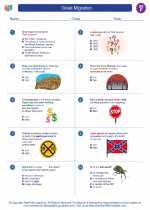Veterans Day
Veterans Day is a national holiday in the United States that honors and celebrates the service and sacrifice of military veterans. It is observed annually on November 11th, the anniversary of the signing of the armistice that ended World War I. Originally known as Armistice Day, it was established as a way to recognize and honor the veterans of World War I, but later expanded to include veterans of all wars and conflicts in which the United States has been involved.
History of Veterans Day
On November 11, 1918, the armistice between the Allied nations and Germany effectively ended World War I. In 1919, President Woodrow Wilson proclaimed November 11 as Armistice Day, calling for the cessation of all business and gatherings at 11:00 a.m. to honor the veterans of the war. In 1938, Armistice Day became a federal holiday dedicated to the cause of world peace. In 1954, after World War II and the Korean War, the 83rd U.S. Congress amended the Act of 1938 by replacing "Armistice" with "Veterans," and November 11th became a day to honor American veterans of all wars.
Celebrations and Observances
Veterans Day is marked by various celebrations and observances across the country. These may include parades, wreath-laying ceremonies at war memorials, moments of silence, and the recognition of veterans in public gatherings. Schools, government offices, and many businesses are closed on Veterans Day, allowing people to participate in events and take time to honor and thank veterans for their service.
How to Honor Veterans
There are many ways to show appreciation and honor veterans on Veterans Day. Some suggestions include:
- Attending a local Veterans Day parade
- Visiting a veterans' hospital or retirement home to spend time with and thank veterans
- Flying the American flag and participating in moments of silence at 11:00 a.m.
- Donating to organizations that support veterans and their families
- Thanking veterans for their service and sacrifices
Study Guide
Use the following questions to guide your study of Veterans Day:
- What is the significance of November 11th in relation to Veterans Day?
- Why was the name of the holiday changed from Armistice Day to Veterans Day?
- How can you show appreciation for veterans on Veterans Day?
- What role do veterans play in the history and security of the United States?
- Why is it important to recognize and honor the service of veterans?
Understanding the history and significance of Veterans Day is an important part of honoring and appreciating the service of our military veterans.
[Veterans Day] Related Worksheets and Study Guides:
.◂Social Studies Worksheets and Study Guides Sixth Grade. Great Migration

 Worksheet/Answer key
Worksheet/Answer key
 Worksheet/Answer key
Worksheet/Answer key
 Worksheet/Answer key
Worksheet/Answer key
